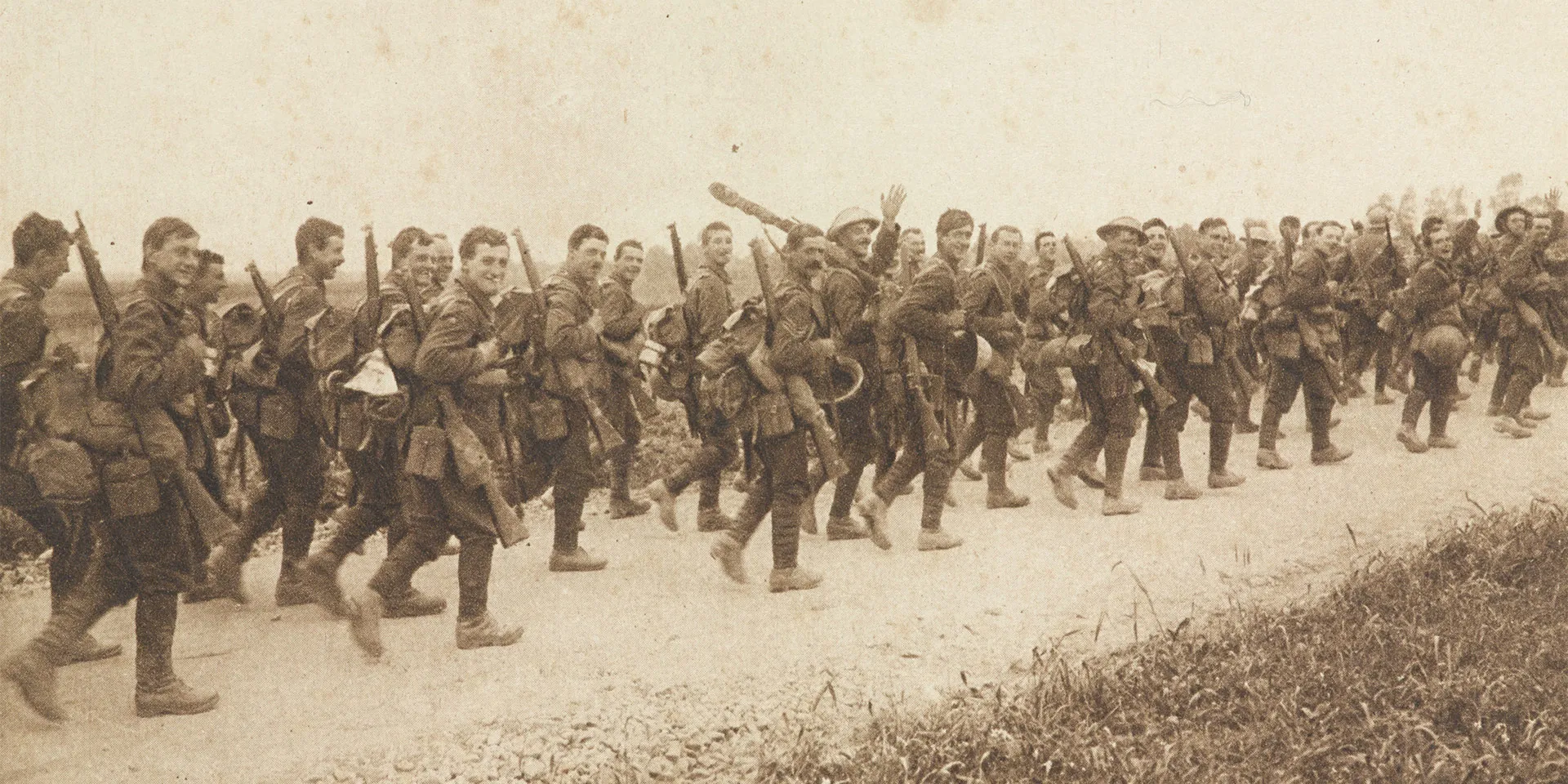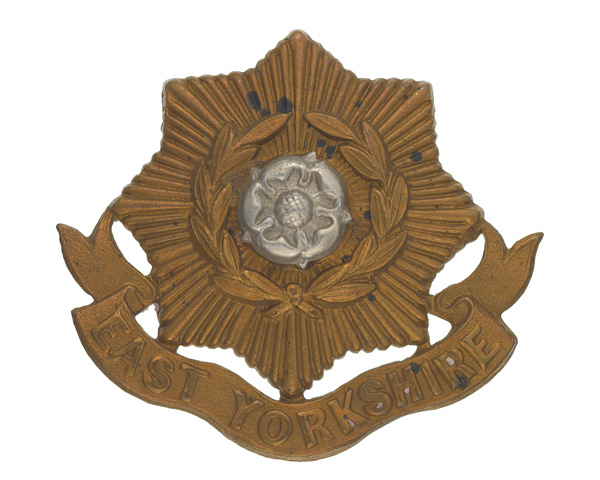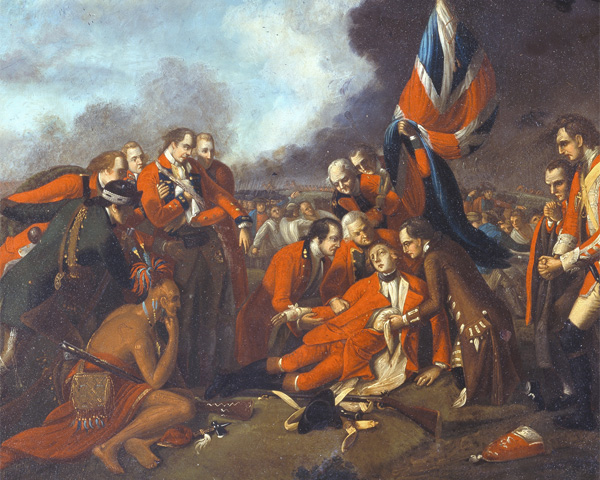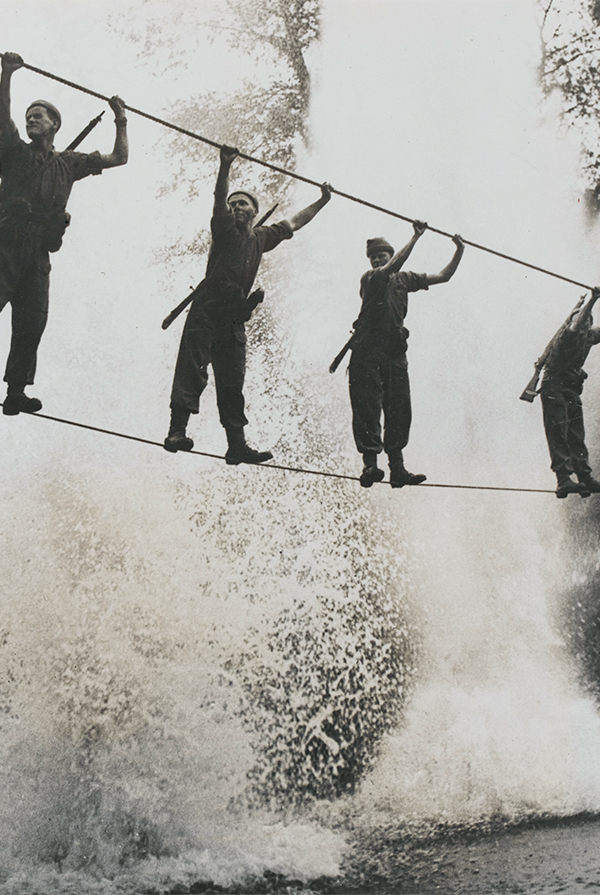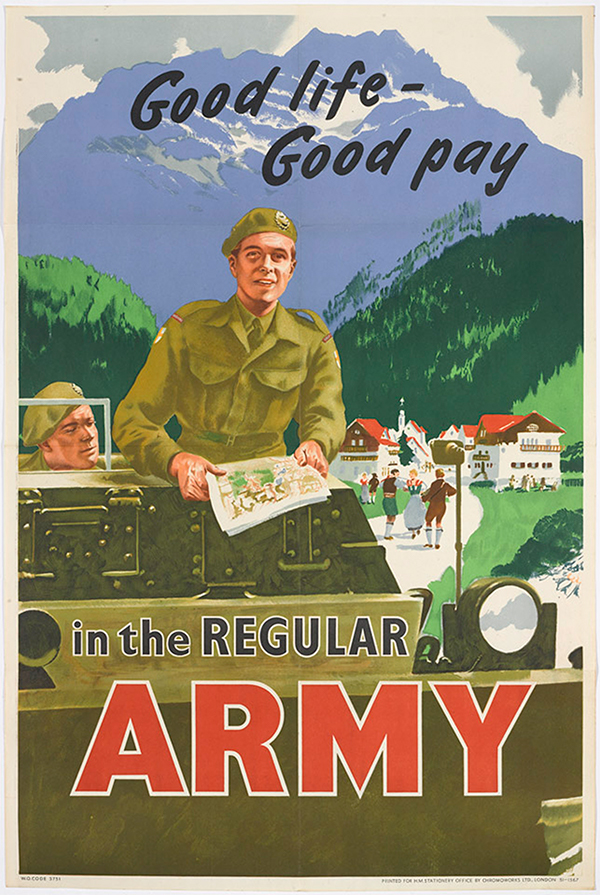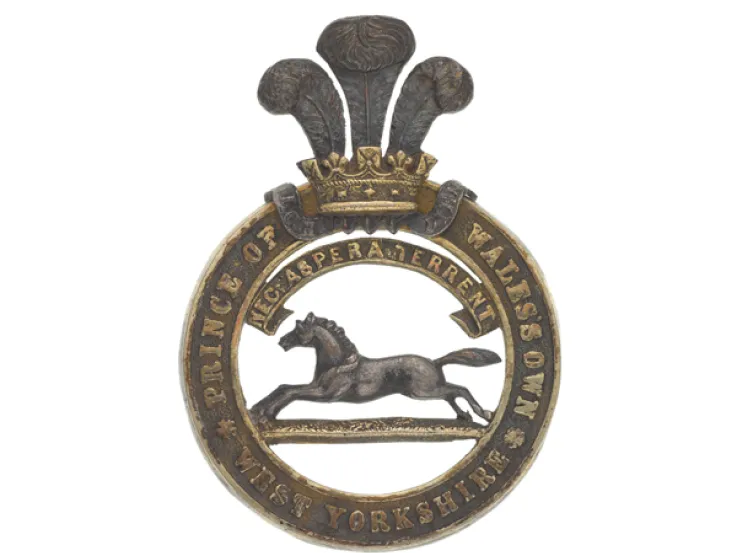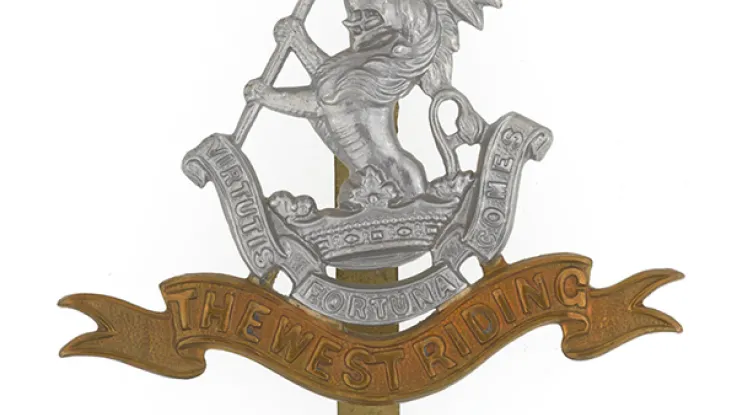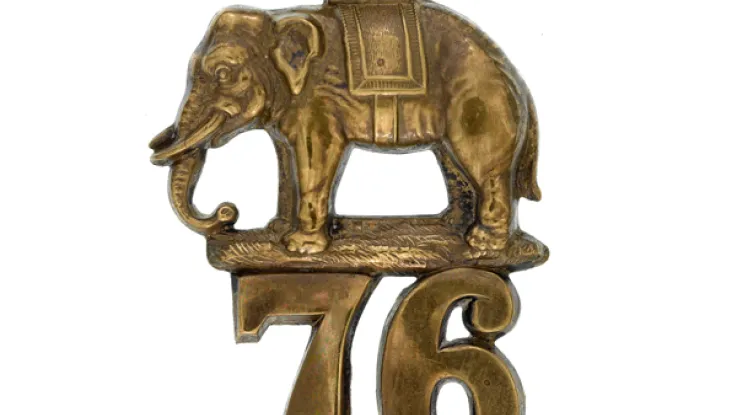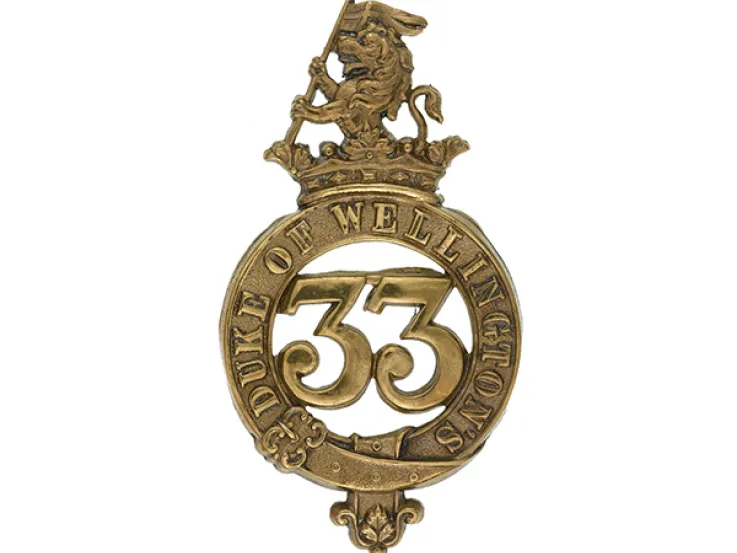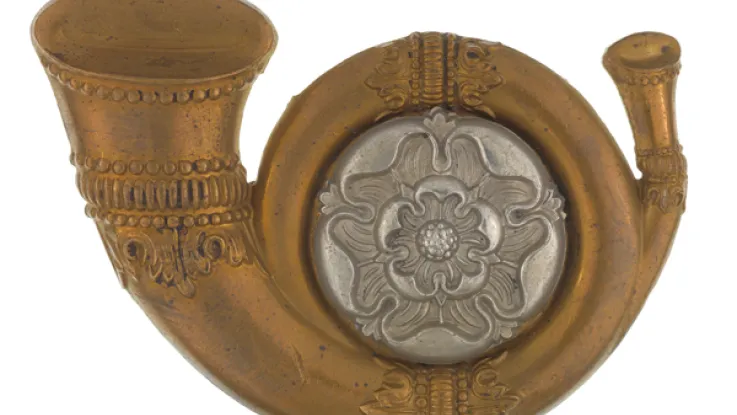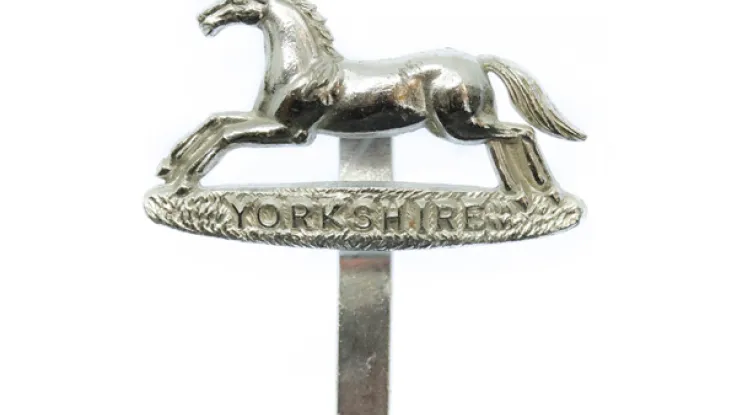Explore more from Regiments and Corps
The East Yorkshire Regiment (The Duke of York’s Own)
5 minute read
Origins
This regiment was originally raised at Nottingham by Sir William Clifton in June 1685, one of several units formed to bolster King James II against the Duke of Monmouth's rebellion.
Following the ‘Glorious Revolution’ of 1688, it went over to James’s successor, William III. He sent it to Scotland in 1689, Flanders in 1694, and Ireland in 1698 - the first of four deployments there over the next 100 years.
Early deployments
The regiment fought in all of the Duke of Marlborough’s campaigns in northern European during the War of the Spanish Succession (1702-13) and was one of the five regiments which attacked the village of Blenheim (1704). It then garrisoned Scotland from 1714 to 1724 during and after the First Jacobite Rebellion (1715).
In 1740, it sailed for the West Indies to fight in the War of Jenkins' Ear, serving on Dominica, Jamaica, Cuba, and at Cartagena (in present-day Colombia). It returned to England in 1742, continuing on to Flanders for a year in 1745 and raiding the French coast in 1746. In 1751, it was given the number 15 in the infantry order of precedence.
Revolutionary Wars
In 1757, the 15th Foot was used in the Rochefort Expedition during the Seven Years War (1756-63). It then fought under General James Wolfe at Louisburg (1758) and Quebec (1759), later adopting a black line in its lace in mourning for Wolfe’s death in battle. It remained in Canada until 1768, except for two years in the West Indies.
The regiment spent 1768 to 1776 in Britain, but returned across the Atlantic to North Carolina in time to fight in the American War of Independence (1775-83).
In 1779, it was sent to the West Indies, but in 1782 was captured in its entirety at St Kitts by the Americans’ French allies. That same year, it was given its county association, becoming the 15th (the Yorkshire East Riding) Regiment of Foot.
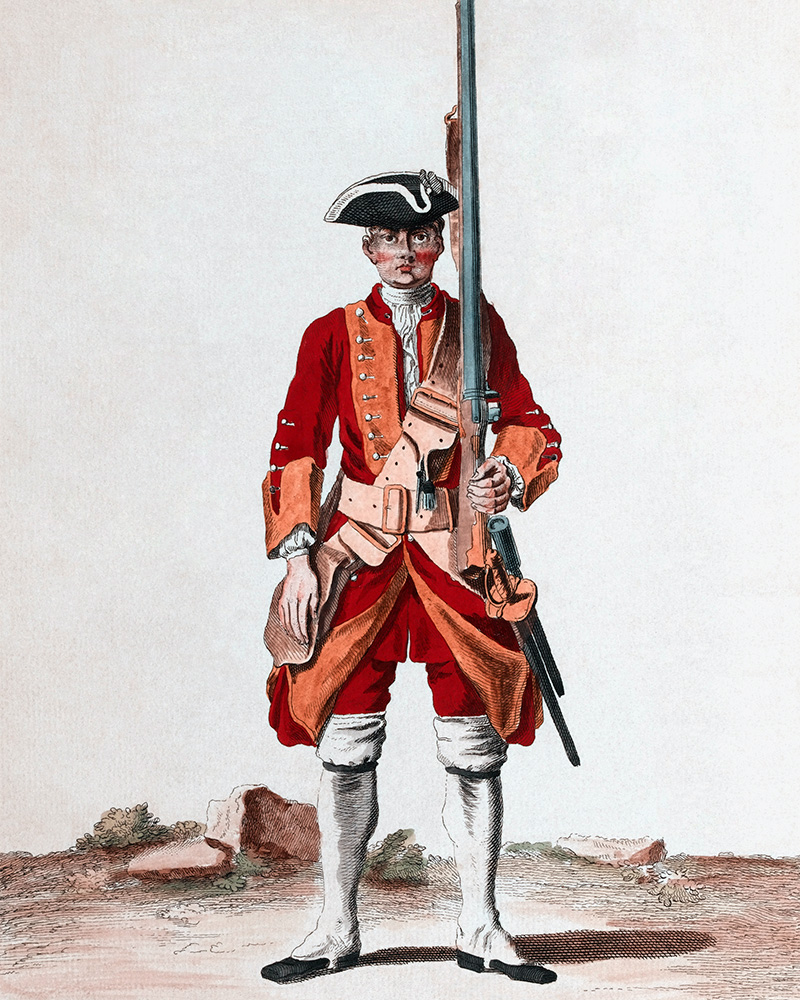
A soldier of the 15th Regiment of Foot, c1742
Napoleonic Wars
It was in Ireland again from 1800, before moving back to the West Indies in 1805, where it remained for the rest of the Napoleonic Wars (1803-15).
The regiment raised and disbanded a 2nd Battalion twice between 1799 and 1816 for garrison duties in England, Ireland and the Channel Islands.
Victorian period
After the Napoleonic Wars, the 15th Foot alternated between England, Ireland and Canada for 28 years, before starting a ten-year posting in Ceylon (now Sri Lanka) in 1845.
In 1858, a new 2nd Battalion was raised. This served mainly in England and Ireland for the rest of the century, although it was also in India from 1875 to 1888 and fought in the Second Afghan War (1878-80).
1st Battalion was in Canada once again in 1862 around the time of the Trent Affair, in which Britain came close to breaking its neutrality in the American Civil War. It then spent much of the 1870s in England and Ireland.
The regiment was largely unaffected by the Army reforms of 1881, but it did undergo another name change, becoming the East Yorkshire Regiment.
In 1885, 1st Battalion began a 20-year odyssey which would take it to Gibraltar, the West Indies, South Africa, Egypt, India and Burma.
2nd Battalion returned to England in 1889. It fought in South Africa during the latter stages of the Boer War (1899-1902), and then deployed to Burma and India in 1905. 1st Battalion returned home the following year.
Musketry exercises, 1914
Created from a series of First World War lantern slides (NAM. 1978-11-157-8), the video below features a soldier of the East Yorkshire Regiment demonstrating various musketry exercises.
World Wars
In 1914, 1st Battalion deployed to the Western Front, where it remained for the whole of the First World War (1914-18). 2nd Battalion joined it there in January 1915, but ten months later moved to Macedonia, where it spent the rest of the conflict. The regiment also raised four Territorial battalions and ten New Army battalions between 1914 and 1918.
1st Battalion was in Ireland from 1919 to 1922 during its War of Independence. During that period, 2nd Battalion went back to India, then to Iraq and Turkey.
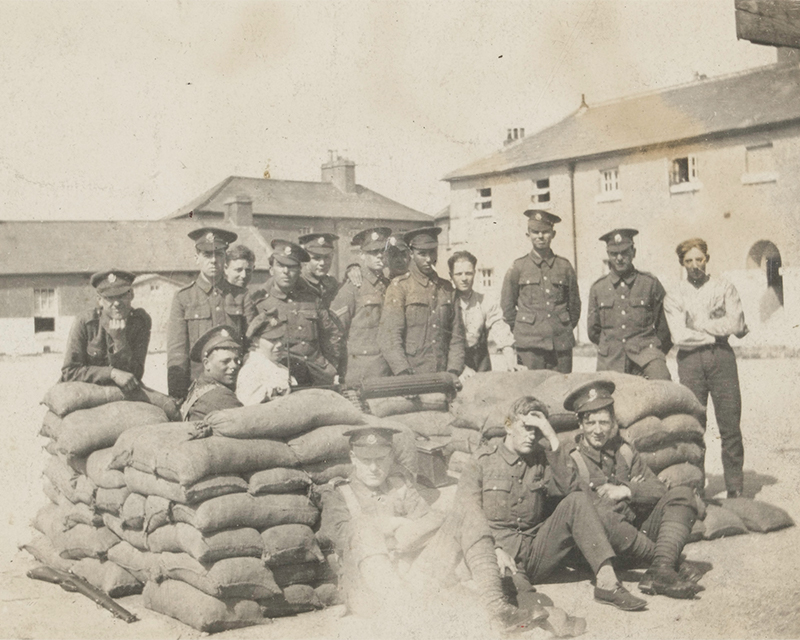
Soldiers of the East Yorkshire Regiment around a Vickers gun post, Ireland, 1921
In 1935, ‘The Duke of York’s Own’ was added to the regimental title to mark both the Silver Jubilee of King George V and the regiment’s 250th anniversary. The Duke of York (the future King George VI) had been the regiment’s colonel-in-chief since 1922.
1st Battalion went to China for three years in 1925, before being posted to India. It remained on the subcontinent throughout the Second World War (1939-45), also fighting in Burma in 1944. Meanwhile, 2nd Battalion fought in North-West Europe in both 1940 and 1944, and was also posted to Palestine in 1937 and 1945.
Post-war deployments
In 1945, 1st Battalion was sent to occupy Austria. It was joined there in 1948 by 2nd Battalion. The two merged later that year.
The regiment then spent most of the rest of its existence as occupation troops in Germany, barring three years fighting in the Malayan Emergency (1949-60).
Legacy
In 1958, it merged with The West Yorkshire Regiment (The Prince of Wales’s Own) to form The Prince of Wales’s Own Regiment of Yorkshire.
Regimental museums
The National Army Museum works with a network of Regimental and Corps Museums across the UK to help preserve and share the history and traditions of the Army and its soldiers.
Discover more about The East Yorkshire Regiment (The Duke of York’s Own) by visiting York Army Museum.

